
Takeda Shingen was daimyo of Kai Province during the Sengoku period of Japan. Known as "the Tiger of Kai", he was one of the most powerful daimyo of the late Sengoku period, and credited with exceptional military prestige. Shingen was based in a poor area with little arable land and no access to the sea, but he became one of Japan's leading daimyo. His skills are highly esteemed and on par with Mōri Motonari.
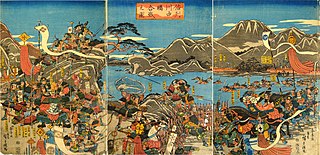
The Battles of Kawanakajima were a series of battles fought in the Sengoku period of Japan between Takeda Shingen of Kai Province and Uesugi Kenshin of Echigo Province from 1553 to 1564. Shingen and Kenshin contested each other for control of the plain of Kawanakajima between the Sai River and Chikuma River in northern Shinano Province, located in the present-day city of Nagano. The battles were triggered after Shingen conquered Shinano, expelling Ogasawara Nagatoki and Murakami Yoshikiyo, who subsequently turned to Kenshin for help.
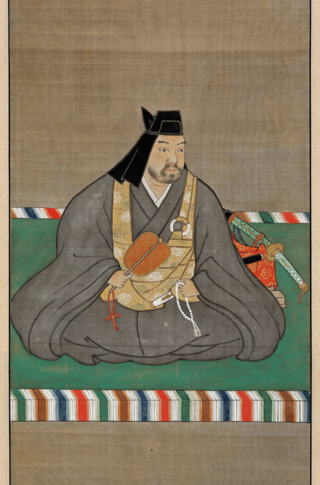
Nagao Kagetora, later known as Uesugi Kenshin, was a Japanese daimyō. He was born in Nagao clan, and after adoption into the Uesugi clan, ruled Echigo Province in the Sengoku period of Japan. He was one of the most powerful daimyō of the Sengoku period. Known as the "Dragon of Echigo", while chiefly remembered for his feats and prowess on the battlefield as a military genius and war hero, Kenshin is also regarded as an extremely skillful administrator who fostered the growth of local industries and trade, and his rule saw a marked rise in the standard of living of Echigo.
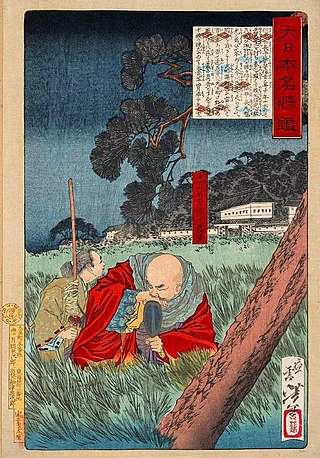
The Siege of Noda Castle (野田城の戦い) took place from January to February 1573, between the forces of the Takeda clan, led by the noted warlord Takeda Shingen, against the Tokugawa clan, led by Tokugawa Ieyasu. Along with the Battle of Mikatagahara it was one of the final battles in Takeda Shingen's long career.
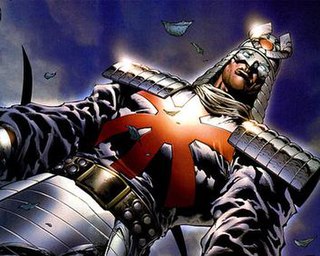
Silver Samurai is the name of two different supervillains appearing in American comic books published by Marvel Comics, both acquaintances of Wolverine.

The Battle of Uedahara (上田原の戦い) was the first defeat suffered by Takeda Shingen, and the first field battle in Japan in which firearms were used. It took place in Shinano Province or the modern-day Nagano Prefecture.
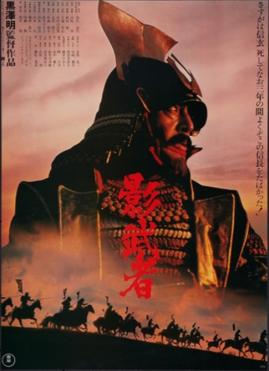
Kagemusha is a 1980 epic jidaigeki film directed by Akira Kurosawa. It is set in the Sengoku period of Japanese history and tells the story of a lower-class criminal who is taught to impersonate the dying daimyō Takeda Shingen to dissuade opposing lords from attacking the newly vulnerable clan. Kagemusha is the Japanese term for a political decoy, literally meaning "shadow warrior". The film ends with the climactic 1575 Battle of Nagashino.

Takeda Nobutora was a Japanese daimyō who controlled the Province of Kai, and fought in a number of battles of the Sengoku period. He was the father and predecessor of the famous Takeda Shingen.

Mariko Yashida is a fictional character appearing in American comic books published by Marvel Comics. The character has been depicted as Wolverine's romantic interest.

The Battle of Sezawa was the first major battle fought by Takeda Shingen in his campaign to gain control of Shinano Province. He took on and defeated a coalition of Shinano daimyō including the leaders of the Suwa, Ogasawara and Murakami clans.
The siege of Kuwabara took place the day after the siege of Uehara; Takeda Shingen continued to gain power in Shinano Province by seizing Kuwabara castle from Suwa Yorishige. Suwa was escorted back to the provincial capital of Kōfu under "the pretext of safe conduct, but he was then forced to commit suicide."

Hōjō Ujiyasu was a daimyō (warlord) and third head of the Odawara Hōjō clan. Known as the "Lion of Sagami", he was revered as a fearsome samurai and a cunning man. He is famous for his strategies of breaking the siege from Takeda Shingen and Uesugi Kenshin. A son of Hōjō Ujitsuna, his only known wife was Imagawa Yoshimoto's sister, Zuikei-in. Among his sons are Hōjō Ujimasa and Uesugi Kagetora.
Suwa Yorishige (諏訪頼重) (1516–1544) was a Japanese samurai, daimyo of Shinano province and head of the Suwa clan. He was defeated by Takeda Shingen, and his daughter Suwa Goryōnin was taken as Shingen's concubine. She later gave birth to the Takeda clan heir Takeda Katsuyori.
The siege of Fukuyo was one of many steps taken by the Japanese feudal lord Takeda Shingen in his bid to seize control of Shinano Province. The fortress at Fukuyo lay in the Ina valley, south of Lake Suwa. Tozawa Yorichika, an ally of Takatō Yoritsugu, lord of Takatō Castle, surrendered quickly. The Battle of Ankokuji followed the siege.

Tada Mitsuyori was a Japanese samurai of the Sengoku period. He is known as one of the "Twenty-Four Generals of Takeda Shingen".
The 1546 siege of Uchiyama was one of many battles fought by Takeda Shingen bid to gain control of Shinano Province. His troops surrounded the fortress and starved out the garrison.
The siege of Shika castle, which took place in September 1547, was one of many battles fought in Takeda Shingen's bid to seize control of Shinano Province.
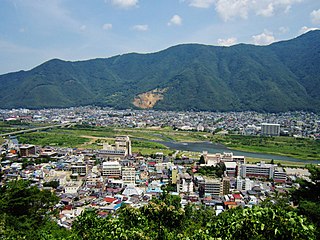
The 1553 siege of Katsurao was one of many sieges undertaken by the warlord Takeda Shingen in his long campaign to gain control of Japan's Shinano province, which was ruled by a hodgepodge of minor daimyō, notably the Suwa, Ogasawara, Murakami and Takato.
The 1554 siege of Kiso-Fukushima was a siege by Takeda Shingen on Fukushima Castle, in the Kiso River Valley of Shinano province. This was one of many battles fought during Shingen's campaign to seize control of Shinano.
The 1554 siege of Kannomine was one of many battles fought in Takeda Shingen's campaign to seize control of Shinano Province. This took place during Japan's Sengoku period; Shingen was one of many feudal lords (daimyōs) who battled to gain land and power.














